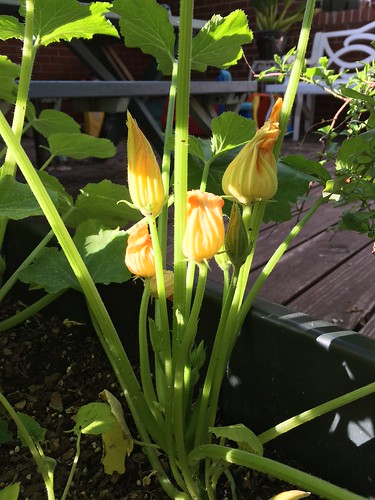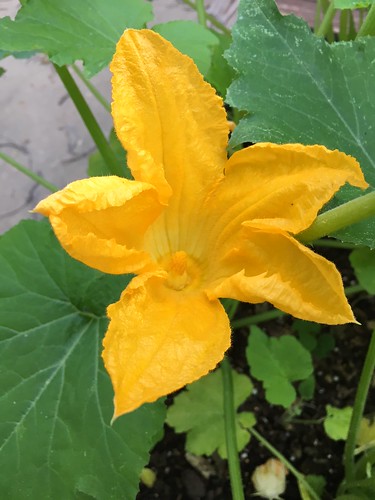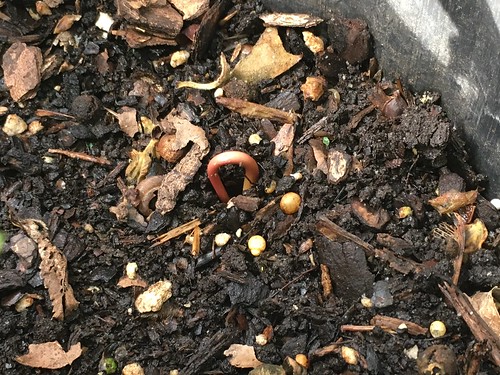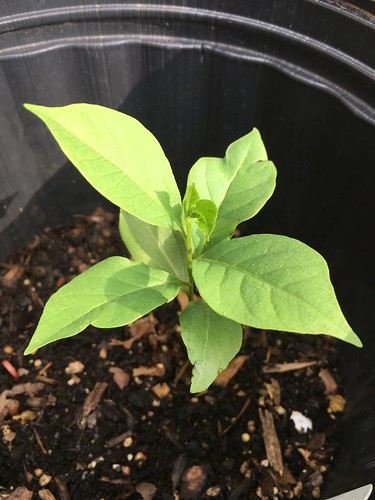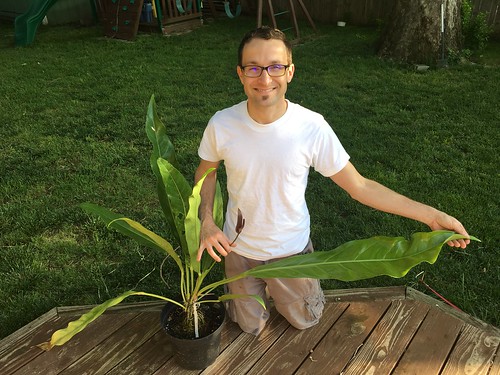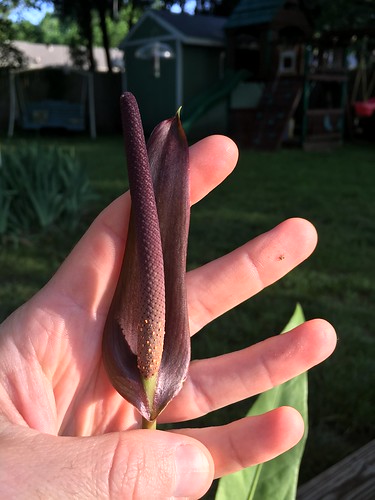Just a month after posting my
Galveston garden update I traveled down there for a weekend birding trip and found that the garden didn't quite look the same. Apparently this winter was a hard one in coastal Texas and a number of plants that had never before seen a hard freeze were zapped to the ground.
 |
| Dead plant material where there used to be Natal Plum (top), as well as Duranta and Jatropha (bottom). |
The Natal Plums (
Carissa macrocarpa) along the front sidewalk had grown really large over the last 5 years but after this winter they were DEAD to the ground. The Duranta (
Duranta erecta), Plumbago (
P. auriculata), Spicy Jatropha (
J. integerrima), White Bird-of-Paradise (
Strelitzia nicolai), Esperanza (
Tecoma stans), and Bougainvillea were also all dead to the ground.
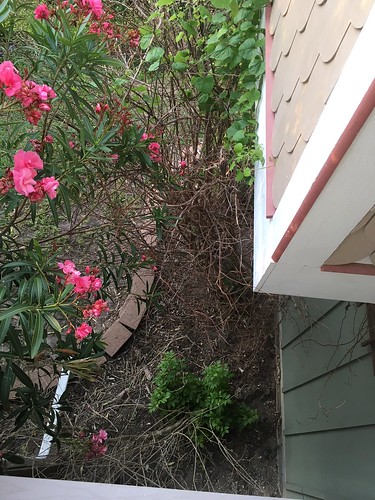 |
Dead plant material where there used to be Bougainvillea and Esperanza.
You can see new Esperanza growth beginning.
|
The good news is that I could see new green stems appearing at the ground level, coming up from the roots, of just about everything. I will have a heck of a job cutting back and disposing of the old, dead growth on my next trip down to Galveston, but thankfully this winter did not spell the end for most of the plants. I guess the other silver lining is that the plants will not be as crowded now that many of them are starting over from ground level.
Plants that seemed to have been unfazed by the winter include: all of the Oleanders, Indian Hawthorns (
Rhaphiolepsis indica), Shrimp Plant (
Justicia brandegeana), Bottlebrush (
Callistemon citrinus 'Little John'), Yucca, Pineapple Guava (
Feijoa sellowiana), Buttonwood (
Conocarpus erectus), and Cycad (
Zamia vazquezii).
